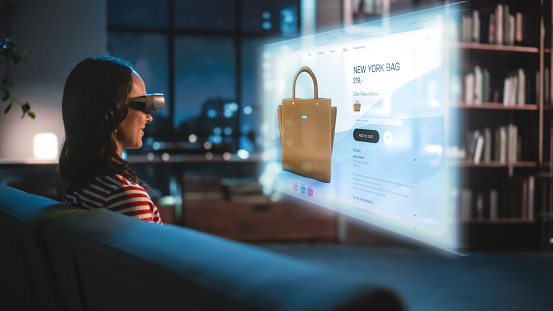Augmented Reality (AR) is a technology that enhances the real-world environment by overlaying digital information, such as images, sounds, and text, on top of it. Unlike Virtual Reality (VR), which creates a completely immersive digital environment, AR allows users to see and interact with the real world while also experiencing digital content.
AR uses a device, such as a smartphone or a tablet, to display digital information. The device’s camera captures the real-world environment, and the AR application then superimposes digital information on top of the camera’s live feed. This creates the illusion of digital objects existing in the real world.
One of the key components of AR is the use of markers or triggers. These are often QR codes or special images that the AR application uses to determine the location and orientation of the device in the real-world environment. Once the marker is identified, the AR application can then display the appropriate digital content in the correct location.
There are several different types of AR, each with its own unique characteristics. One type is marker-based AR, which uses markers or triggers to display digital content. Another type is markerless AR, which uses the device’s camera and GPS to display digital content without the need for markers. And there is also Projection-based AR, which uses a projector to display digital content on a surface in a real-world environment.
AR has a wide range of applications, including education, gaming, and industrial training. In education, AR can be used to create interactive learning experiences, such as virtual field trips and interactive anatomy models. In gaming, AR can be used to create immersive experiences, such as Pokemon Go. In industrial training, AR can be used to provide virtual simulations of equipment and machinery, allowing trainees to practice and learn in a safe environment.
In summary, Augmented Reality (AR) is a technology that overlays digital information on top of the real-world environment, allowing users to see and interact with both the real world and digital content. AR uses markers or triggers, which are often QR codes or special images, to determine the location and orientation of the device in the real-world environment. AR has a wide range of applications including education, gaming, and industrial training and it can be used to create interactive, immersive, and safe learning and training experiences.

